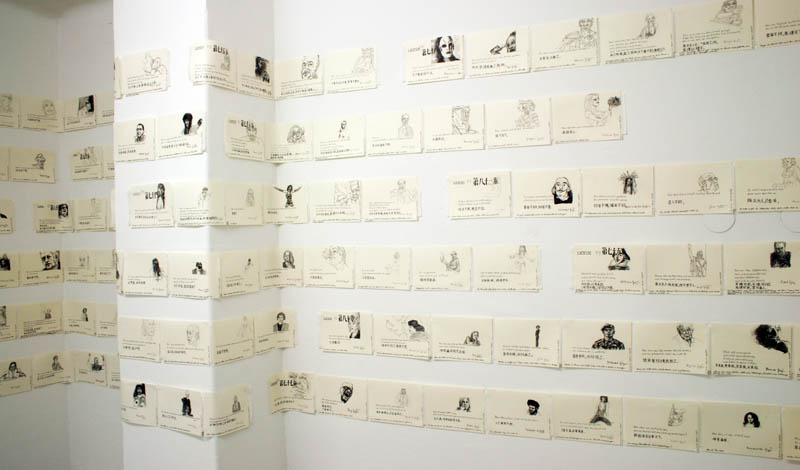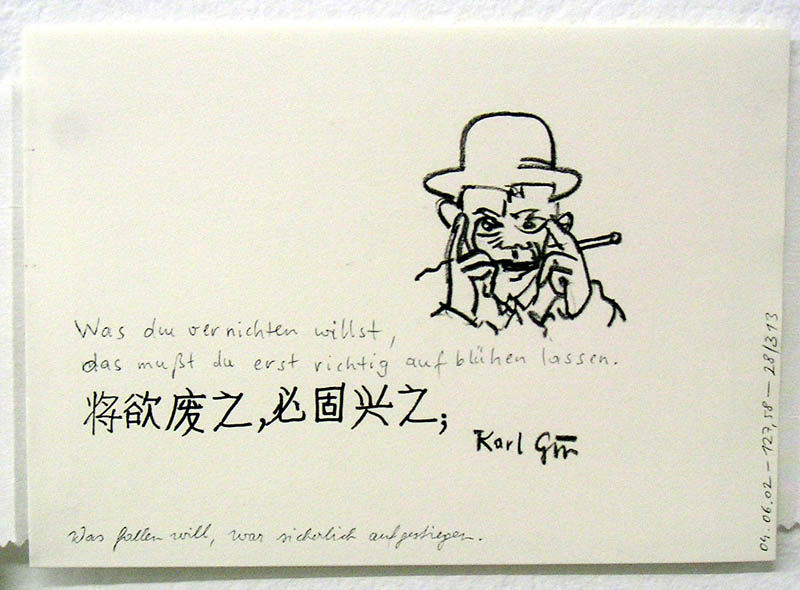
My artistic involvement with the famous „Dao de jing“ by Laozi began in 2001, in preparation for my first visit to China.
Every day over the course of four years I transcribed a phrase of this basis text of Chinese heritage – reproducing it sentence by sentence both in its original lettering as well as in two German translations.
As if having them spoken by various existing people, I added a drawn portrait, based on a picture in a current daily newspaper to each sentence. This resulted in the production of 81 leporellos with a total of 701 pieces of paper each page signed with the first name of the person depicted and my (own) last name.
Thus I slipped into the role of those persons – published in the newspaper and having therefore become persons in the public eye – considering the proverbs of the wise Laozi for their current relevance.
As a result of the total otherness of the Chinese linguistic culture, the German translations differ significantly from each other in wording and meaning. Furthermore, my introduction of the “speakers” shifts or changes the connotation of the message itself.
Is it possible to transfer – in essentials – the Taoist doctrine or even Asian philosophy of life into the so-called West, as my wooden box suggests?
Can cultural exchange between Asia and Europe prove to be fertile despite – or even because – of all the (possible) misunderstandings?

| Attachment | Size |
|---|---|
| gwiggner.jpg | 66.77 KB |
| gwiggner1.jpg | 94.4 KB |